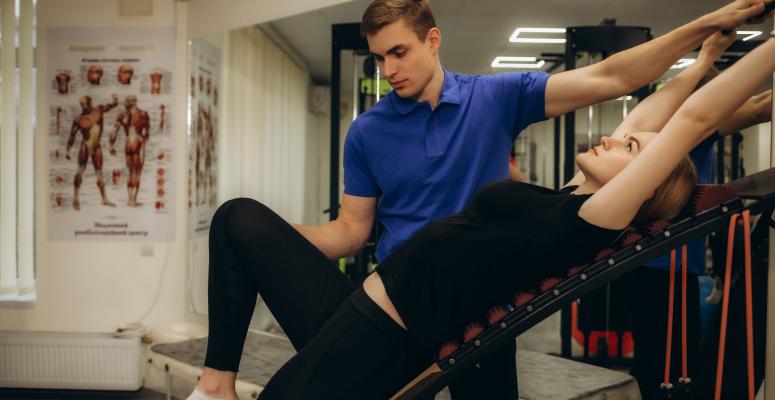
Therapy can refer to many different types of services in health care. For instance, psychotherapy can help improve your mental health. Massage therapy improves your overall mind and body with a holistic focus. When it comes to helping the overall quality of life for people with injuries or disabilities, you’ll likely hear the terms “occupational therapy” and “physical therapy.”
Occupational therapy and physical therapy each play a vital role in the world of health care. But they are geared toward different types of patients. Comparing occupational therapy versus physical therapy will help you determine which will be more effective for your particular needs.
We’ll talk about the basics of each one before comparing the similarities and differences between occupational therapy and physical therapy.
The basics of occupational therapy vs. physical therapy
Before we compare occupational therapy versus physical therapy, let’s look at their individual definitions.
Occupational therapy refers to helping people with injuries, disabilities or illnesses handle day-to-day activities. It helps to foster independence and provide people with the skills they need to carry out everyday tasks.
Physical therapy helps alleviate pain and improve the body’s mobility and function that has been impacted by an injury, medical condition or surgery. It helps patients restore, maintain and improve their fitness.
It’s worth noting that physical therapists and occupational therapists often work together to maximize a patient's results. They may also be referred to one another.
Similarities between occupational therapy and physical therapy
It’s time to discuss what occupational therapy and physical therapy have in common. The most important similarity to remember is that they have the same goal. They both focus on improving the overall health and wellness of patients who have had their quality of life impacted by their issues.
Here are a few things that occupational therapy and physical therapy have in common:
- Evaluations are held to test a patient's physical abilities.
- Customized plans are designed to fit the patient’s specific needs and goals.
- The goal is improvement of strength, flexibility, mobility and function.
Occupational therapy and physical therapy can both benefit patients who are:
- Recovering from injuries due to sports or car accidents.
- Recovering from surgery.
- Struggling with chronic pain.
- Living with neurological disorders.
Differences between occupational therapy and physical therapy
It’s helpful to see what occupational therapy and physical therapy have in common. But the differences between the two are how you can determine which option will work best for your needs. We’ll cover three major differences between occupational therapy and physical therapy.
- Approach — The main difference between occupational therapy and physical therapy is their approach. Occupational therapy focuses on helping a patient modify their daily activities, environment or skill set to suit their abilities. Physical therapy focuses on reducing a patient’s pain. PT can also help improve their overall physical capabilities.
- Types of problems — There are some problems that would benefit more from occupational therapy than physical therapy. Physical therapy is effective for people struggling with physical issues such as soft tissue injuries. Occupational therapy can help patients with cognitive and sensory issues as well.
- Motor skills — Physical therapists and occupational therapists focus on different motor skills. A physical therapist will help improve your gross motor skills. These are the skills that require major muscle groups, such as walking and jumping. An occupational therapist focuses on fine motor skills. These utilize the small muscles used for tasks like holding a knife and brushing your hair.
When you’re struggling with an issue that impacts your quality of life, be sure to talk to a health care provider. They'll help you weigh the options of occupational therapy versus physical therapy.
Alliance PTP can connect you with the physical therapy to help in areas where occupational therapy can’t
While occupational therapy can be highly beneficial to many patients, physical therapy can help you work toward being the healthiest version of yourself.
Ready to try in-person physical therapy for your injury or condition? You’ll find plenty of options to choose from among the Alliance Physical Therapy Partners practices nationwide.
Our team can quickly put you in touch with one of our partner clinics near you, and their friendly and knowledgeable local staff can help you find care.
Still have questions about what we and our partners can do for you? We’re ready to answer them and help you find the physical therapy you need.
Get Help at a Location Near You
